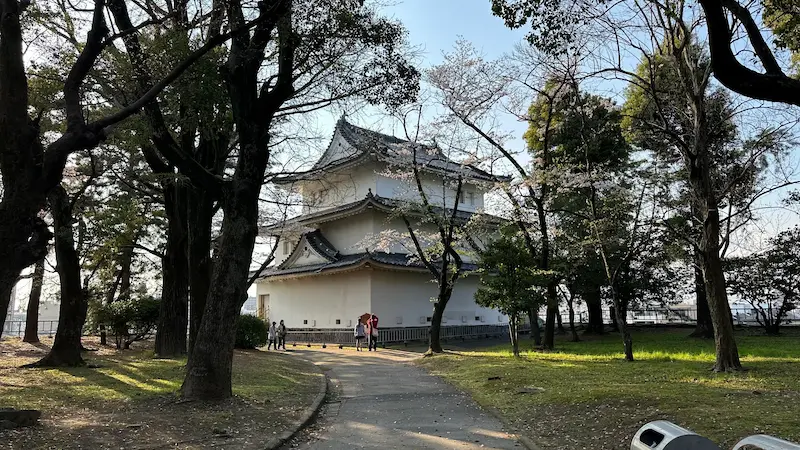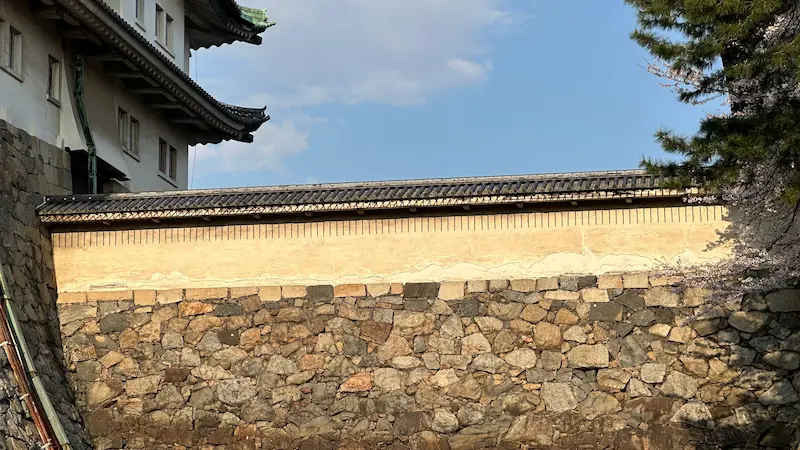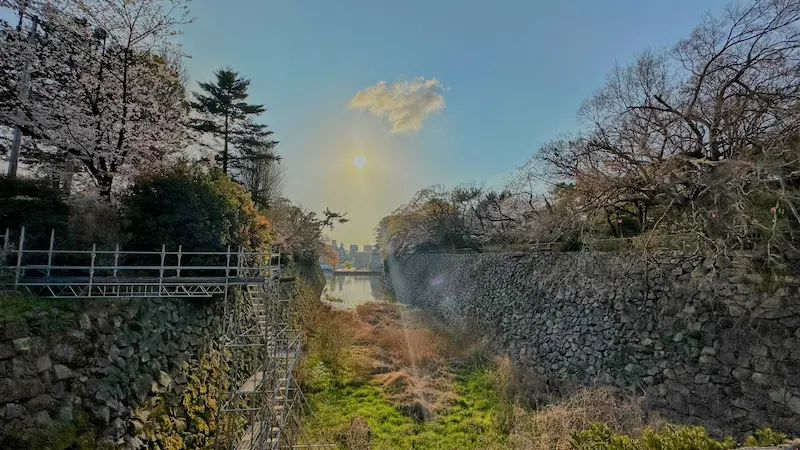The Art of Defense in the Age of the Samurai: Exploring the Strategic Beauty of Nagoya Castle
Nagoya Castle stands not only as a symbol of architectural grandeur but also as a testament to the military ingenuity of the Sengoku era. Its defensive features—ranging from the imposing Seihoku-sumi Yagura (Northwest Corner Turret), to the intimidating Kenbei (Spearhead Fence), and the cleverly designed narrow corridors known as U no Kubi (Cormorant’s Neck)—embody both practicality and aesthetic elegance. In this article, we guide you through the historic defensive elements of the Ofukemaru Area, where strategy and structure converge in a visually captivating display of samurai-era craftsmanship.
Seihoku-sumi Yagura (Northwest Corner Turret)

🏛 Overview
Positioned at the northwest edge of the Ofukemaru area, the Seihoku-sumi Yagura was constructed around 1619. Featuring a three-tiered exterior and three floors inside, this turret measures approximately 13.9 meters east-west, 16.9 meters north-south, and stands about 16.2 meters high. Among surviving three-tiered turrets from the Edo period, it ranks as the second largest in Japan, rivaling even some castle keeps in size.
Also known as the Kiyosu Yagura, it is believed to be a relocated structure—either the main or secondary keep—from Kiyosu Castle, dismantled and moved here around 1611. Repair works have revealed signs that support this theory.
In 1930, it was designated a National Treasure, and today it is preserved as an Important Cultural Property.
🗺 Address
1-1 Honmaru, Naka Ward, Nagoya, Aichi Prefecture
🚶 Access
Approx. 3-minute walk (200m) from the Tea Houses
⏳ Suggested Visit Duration
- Quick Stop: Approx. 3 minutes
- In-depth Tour: Approx. 15 minutes
📍 Highlights
- Architectural Features: The irimoya-zukuri (hip-and-gable) roof with decorative ridge tiles and chidori hafu (gabled projections) on each side. Ishi-otoshi (stone-dropping slots) are installed on the north and west sides for defense.
- Surrounding Sites: Explore nearby historical features like the restored Sarumen Tea House and the Meiji-era Nogi Storehouse.
- Seasonal Appeal: Spring cherry blossoms beautifully frame the turret, offering stunning photographic opportunities.
📌 Trivia
- Unexpected Origins: Thought to be relocated from Kiyosu Castle, thus earning the nickname Kiyosu Yagura.
- Hidden Gem: It’s the second-largest surviving turret in Japan—larger than some castle keeps.
- Historic Significance: Constructed as part of Tokugawa Ieyasu’s master plan for Nagoya Castle.
Kenbei (Spearhead Fence)

🏛 Overview
Kenbei, or “spearhead fence,” is a rare and formidable defensive structure unique to Nagoya Castle. Located atop the southwest stone walls of the Honmaru Palace, this barrier features sharp triangular protrusions designed to physically prevent enemies from climbing over the walls.
These serrated spikes are not only practical but also serve as a powerful visual deterrent. As one of the few remaining examples of this structure in Japan, the Kenbei represents a striking blend of aesthetic design and military function.
🗺 Address
1-1 Honmaru, Naka Ward, Nagoya, Aichi Prefecture (southwest stone wall)
🚶 Access
Approx. 4-minute walk (270m) from the Northwest Corner Turret
⏳ Suggested Visit Duration
- Quick Stop: Approx. 3 minutes
- In-depth Observation: Approx. 10 minutes for those with an interest in architecture
📍 Highlights
- Fence Design: The jagged, triangular spikes atop the fence are both functional and intimidating, showcasing Edo-period ingenuity.
- Integrated Stonework: Built directly onto the stone walls of the palace, the Kenbei exemplifies the castle’s robust and layered defensive planning.
- Seasonal Appeal: In spring and autumn, the natural surroundings enhance the visual impact of this rare defensive structure.
📌 Trivia
- Historical Context: While designed for actual combat defense, Kenbei also served as a symbol of authority and prestige.
- Little-Known Fact: Very few such fences remain in Japan—Nagoya Castle is one of the only places where you can see one up close.
- Famous Connection: The fence was part of Tokugawa Ieyasu’s original blueprint for the castle, reflecting the military philosophy of the Owari Tokugawa clan.
U no Kubi (Cormorant’s Neck)

🏛 Overview
The term U no Kubi, or “Cormorant’s Neck,” refers to a narrow, winding section of the moat designed to extend deep into the interior of the castle grounds. This strategic layout funneled enemies into tight, constrained paths, making them easier to defend against.
Originally, five U no Kubi existed in Nagoya Castle. One was filled in during the Meiji era to facilitate carriage travel, leaving four still intact today. These narrow channels demonstrate brilliant defensive planning, turning natural topography into military advantage.
🗺 Address
1-1 Honmaru, Naka Ward, Nagoya, Aichi Prefecture
🚶 Access
Approx. 1-minute walk (20m) from the Kenbei
⏳ Suggested Visit Duration
- Quick Stop: Approx. 3 minutes
- In-depth Tour: Approx. 15 minutes
📍 Highlights
- Strategic Pathways: The narrowed, curving design limits enemy maneuverability, giving defenders a distinct upper hand.
- Stone Masonry: The precisely built stone walls contouring the moat showcase advanced engineering of the era.
- Seasonal Appeal: Springtime cherry blossoms add charm and contrast to this fortress-like structure.
📌 Trivia
- Unexpected Use: One U no Kubi was filled during the Meiji period to accommodate carriages, showing adaptation to modern needs.
- Little-Known Fact: This defensive design is rare and not commonly found in other Japanese castles.
- Famous Connection: Part of the original design under Tokugawa Ieyasu, it exemplifies the strategic sophistication of the time.



comment